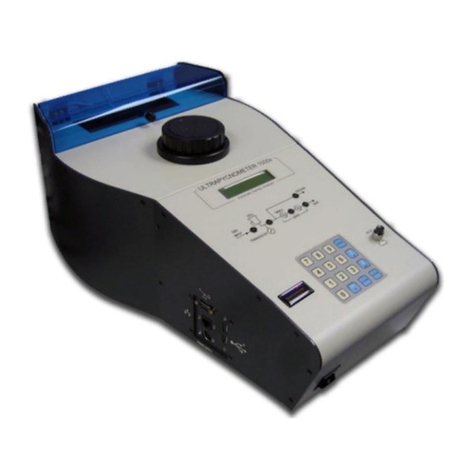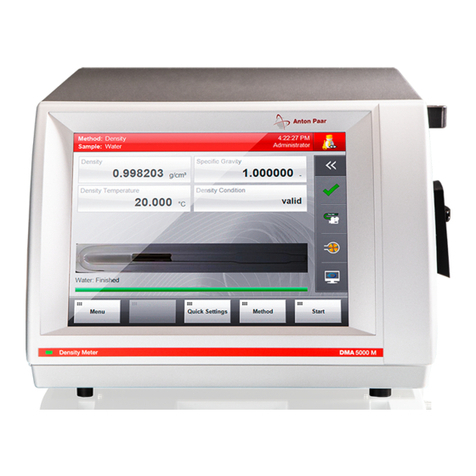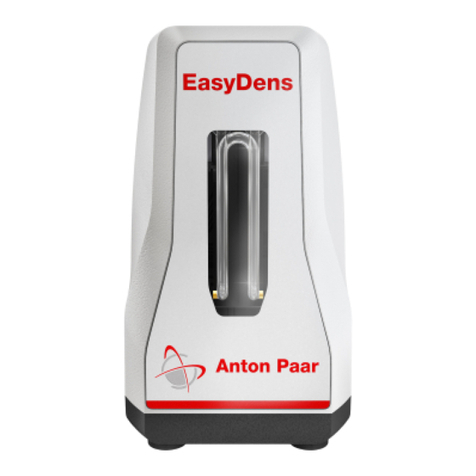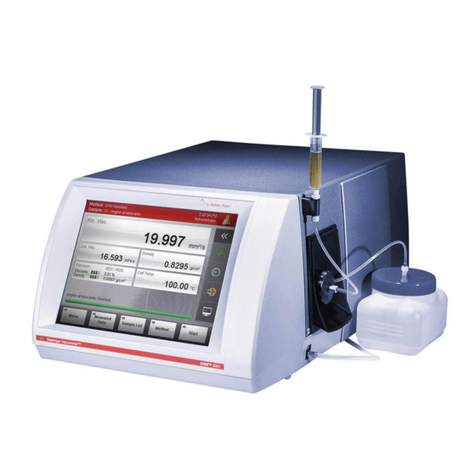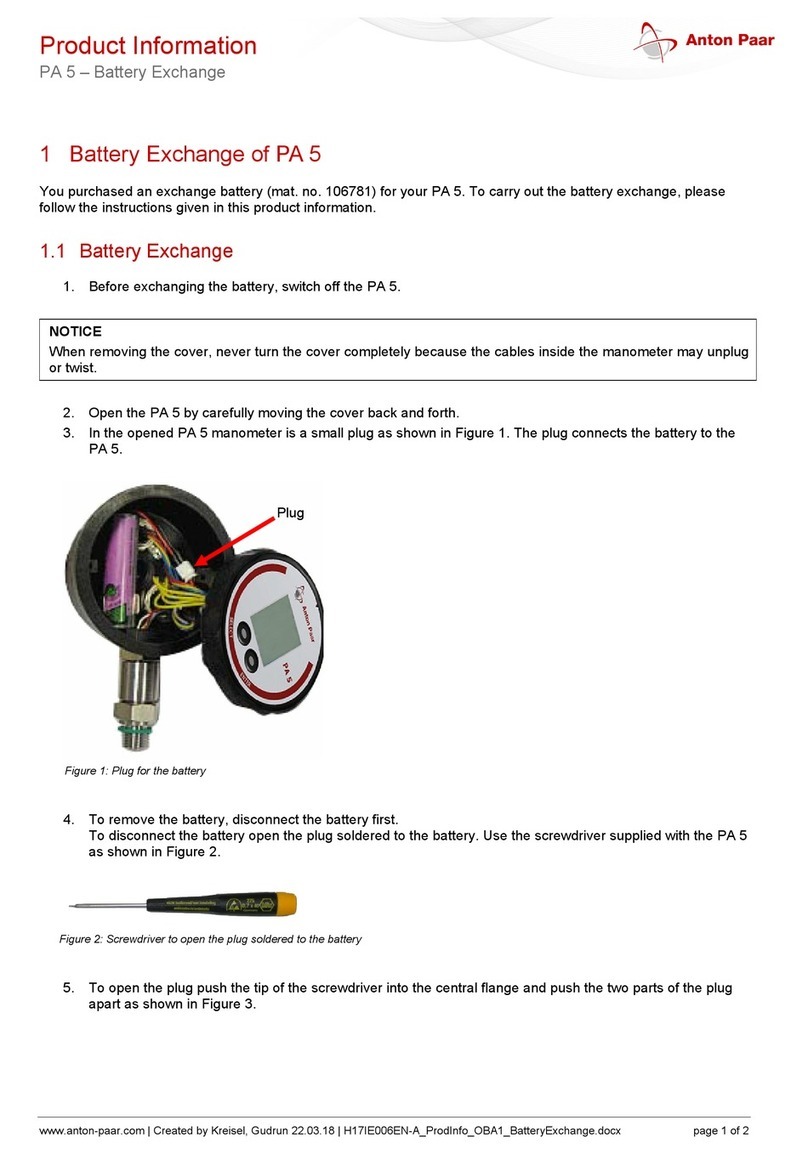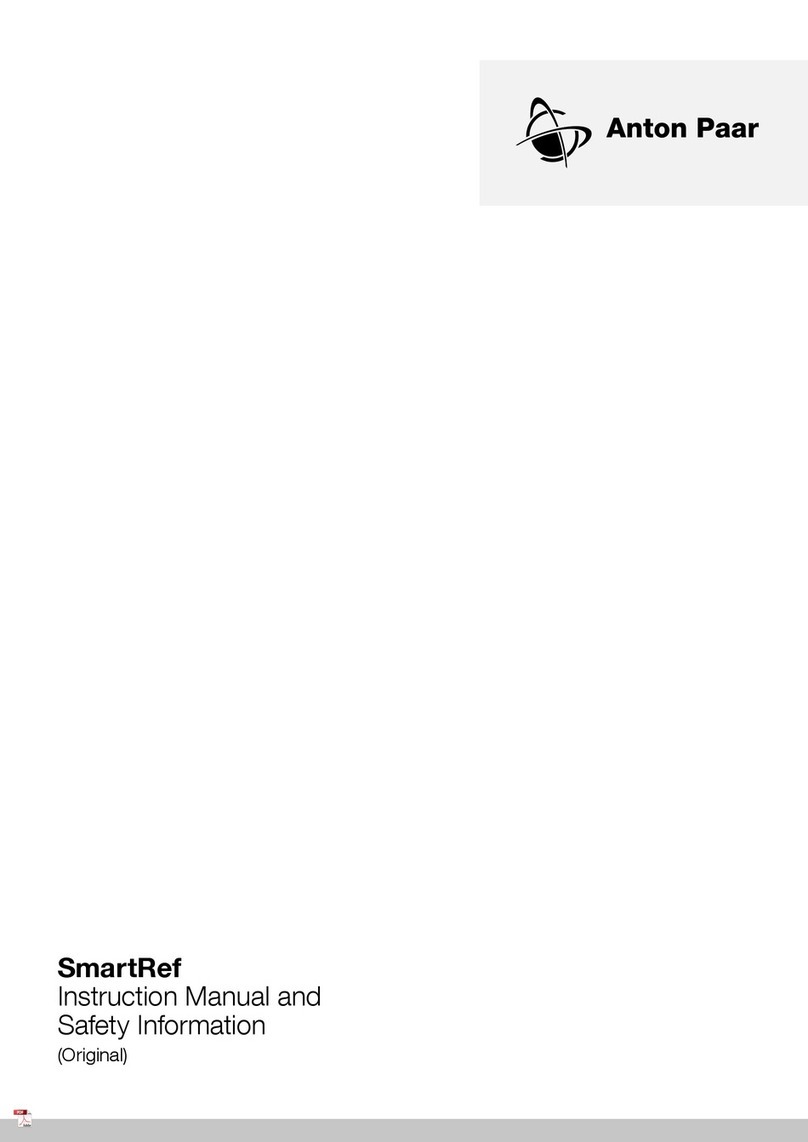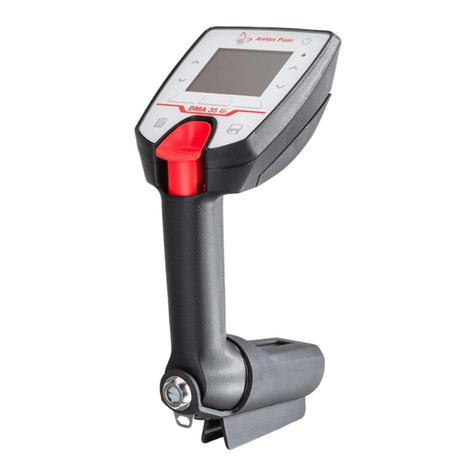
2 Safety Instructions
8C76IB003EN-N
2 Safety Instructions
• Read this instruction manual before using the
instrument.
• Make this instruction manual easily accessible
to all persons working with the instrument.
• Follow all hints and instructions in this instruc-
tion manual to ensure the correct use and safe
functioning of the instrument.
2.1 Liability
• This instruction manual does not claim to
address all safety issues associated with the
use of the instrument and samples. It is your
responsibility to establish health and safety
practices and to determine the applicability of
regulatory limitations.
• Anton Paar GmbH warrants the proper
functioning of the instrument only if no
modifications are made to mechanics,
electronics, module firmware, or instrument
software.
• Use the instrument only for the purpose
described in the instruction manual. Anton Paar
GmbH is not liable for damages caused by
incorrect use of the instrument.
• The results delivered by the instrument depend
not only on the correct functioning of the
instrument but also on various other factors. We
therefore recommend that you have the results
checked (e.g. plausibility tested) by skilled
personnel before consequential actions are
taken based on the measured data.
2.2 Installation and Use
• The installation procedure shall be carried out
only by authorized personnel who are familiar
with the installation instructions.
• Use only accessories or consumables supplied
or approved by Anton Paar GmbH.
• Ensure that all operators have been trained
beforehand to use the instrument safely and
correctly.
• Ensure that the instrument is sufficiently
supervised during operation.
• In case of damage or malfunction, do not
continue operating the instrument. Do not
operate the instrument under conditions which
could result in damage to goods or injuries or
loss of life.
• If liquid has been spilled over the instrument,
disconnect the instrument from the mains
supply. Clean and dry the housing of the
instrument. If you have a suspicion that liquid
got into the instrument, have the instrument
cleaned and checked for electrical safety by a
service technician.
Operation in areas with risk of explosion
• The instrument is not explosion-proof and
therefore must not be operated in areas with risk
of explosion.
General precautions
• Observe and adhere to your national safety
regulations regarding the handling of all
substances associated with your measurements
(e.g. use safety goggles, gloves, respiratory
protection, etc.).
• Before a measurement, check the wetted parts
of the instrument for chemical resistance to the
samples and cleaning agents used.
• Take care that the liquids (samples and cleaning
agents) or gases that you use are chemically
compatible when they come into contact with
each other. They shall not react exothermally or
produce solid particles which might stick to the
inner walls of the measuring cells.
• Before you start a measurement or cleaning
procedure, take care that all parts, especially
the measuring cells, the injection adapters, the
hoses, and the waste vessel, are properly
connected and in good condition.
• Before you start a measurement or cleaning
procedure, check the injection adapters for leak
tightness.
• Take measures that spilled liquids cannot get
into plug connections or venting slots of
electrical appliances.
• Connect the measuring system to the mains
supply via a safety switch located at a safe
distance from the instruments. In an emergency,
turn off the power using this switch instead of
the power switch on the instruments.

